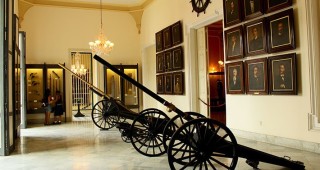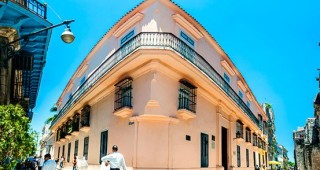
One of Havana’s oldest and most famous cigar factories, the landmark neoclassical Real Fábrica de Tabacos Partagás was founded in 1845 by a Spaniard named Jaime Partagás and was built in response to the increase in demand this industry experienced during the second half of the 19th century. The original construction, which includes a courtyard surrounded by an arcade, was expanded in the early 20th century with the construction of a second floor and a two-story annexed building. Its façade is simple and matches the image that was predominant at the time: strong solid presence, rectangular distribution with elongated openings and a continuous balcony with iron rails.
Specializing in full-bodied cigars, today some 400 workers toil for up to 12 hours a day in here rolling such famous cigars as Montecristos and Cohibas.
The Partagás factory has been producing fine cigars for more than 160 years and offers the most insightful cigar tour in Havana and the most popular and reliable factory to visit. Tour groups check out the ground floor first, where the leaves are unbundled and sorted, before proceeding to the upper floors to watch the tobacco get rolled, pressed, adorned with a band and boxed. An English-speaking guide is always available, and the cigar shop is one of the most popular in the city.
Admission: CUC 10 (incl. tour); free under-12s
Opening hours: 9-11am, 12:30-2:30pm Mon-Fri (45-minute guided tour) Buy tickets in advance at the Saratoga or Habana Libre hotels


 Baroque
Baroque








